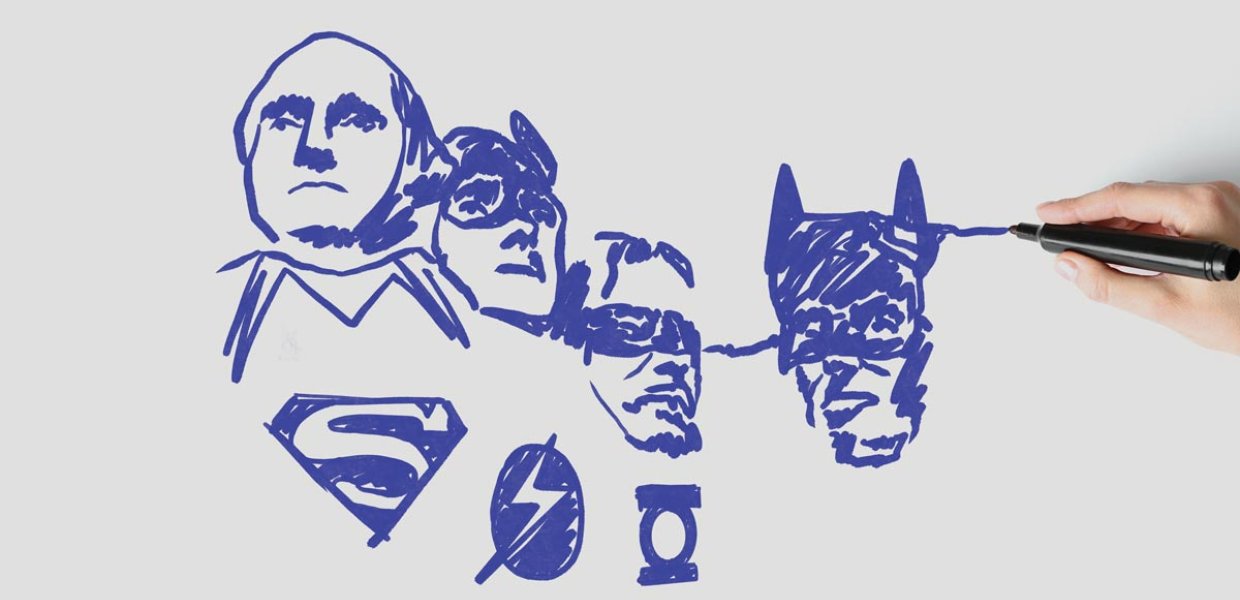Close your eyes and imagine your favorite character from popular culture. Think about who they are, what they value, and how they behave. Now, draw that character on a piece of paper and identify a problem or issue you currently see at home, school or in the community you care deeply about. How would the character solve the problem?
This “Characters, Problems, Solutions” exercise is just one of the activities that USC Annenberg’s Civic Imagination Project uses to help participants activate their imaginations to work through societal challenges in the community.
“We wanted to explore how it was possible to imagine new positive alternatives to cultural, social, political, or economic conditions,” said Henry Jenkins, Provost Professor of Communication, Journalism, Cinematic Arts and Education.
Established in 2016, the project is spearheaded by Jenkins, Director of Research and Programs Sangita Shresthova, and Gabriel Peters-Lazaro, a professor of cinematic arts who has since passed away. They define civic imagination as a tool and concept to help engage a collective vision for what a better tomorrow might look like. With funding from the MacArthur Foundation, they have several projects under their umbrella, two specifically around politics and youth activism.
The team conducted workshops across the country and analyzed case studies on different social movements worldwide. The in-person or virtual workshops engaged participants in creative exercises such as drawing, arts and crafts, show-and-tell and storytelling.
“We developed this playful approach where we bridge between theory and practice to help communities use narrative and pop culture to come together on divisive issues,” Shresthova said. “This is a great way to help people use our created materials to foster more political engagement and communal participation.”
In 2019, the team traveled to rural areas and held workshops and asked participants to share items of sentimental value or significant life events. When asked to describe an ideal world as it might exist in 2060, participants agreed that having a sense of security and well-being and living in a society that is accepting of diverse backgrounds and identities was an important factor. However, they differed in opinion about their faith in core institutions, and ways to manage healthcare.
“We were in Bowling Green, Ky., with tobacco farmers and coal miners, both of whom work in industries experiencing rapid changes and decline, and we asked them about the future of work in Kentucky,” said Jenkins. “Someone wanted self-driving cars and another person said, ‘They can take my pickup truck away from me when I’m dead, but not before,’ which opened questions about values and priorities.”
In addition to the workshops, the case studies they investigated were focused on new media and popular culture. Examples are the three-finger salute in The Hunger Games movies, symbolizing resistance and reenacted during recent political rallies and women’s marches, and students in Hong Kong singing “Do You Hear the People Sing” from Les Miserables as their anthem for democratic aspirations. Findings revealed that contemporary youth are adopting political metaphors as expressions of discontent with societal conditions in hopes of changing the status quo.
“Over the past few decades, narratives in pop culture have spoken powerfully to individuals in particular subcultures and generational cohorts,” Jenkins said. “While no one popular narrative can speak for everyone, we have seen the power that stories can have to inspire and empower social change.”
